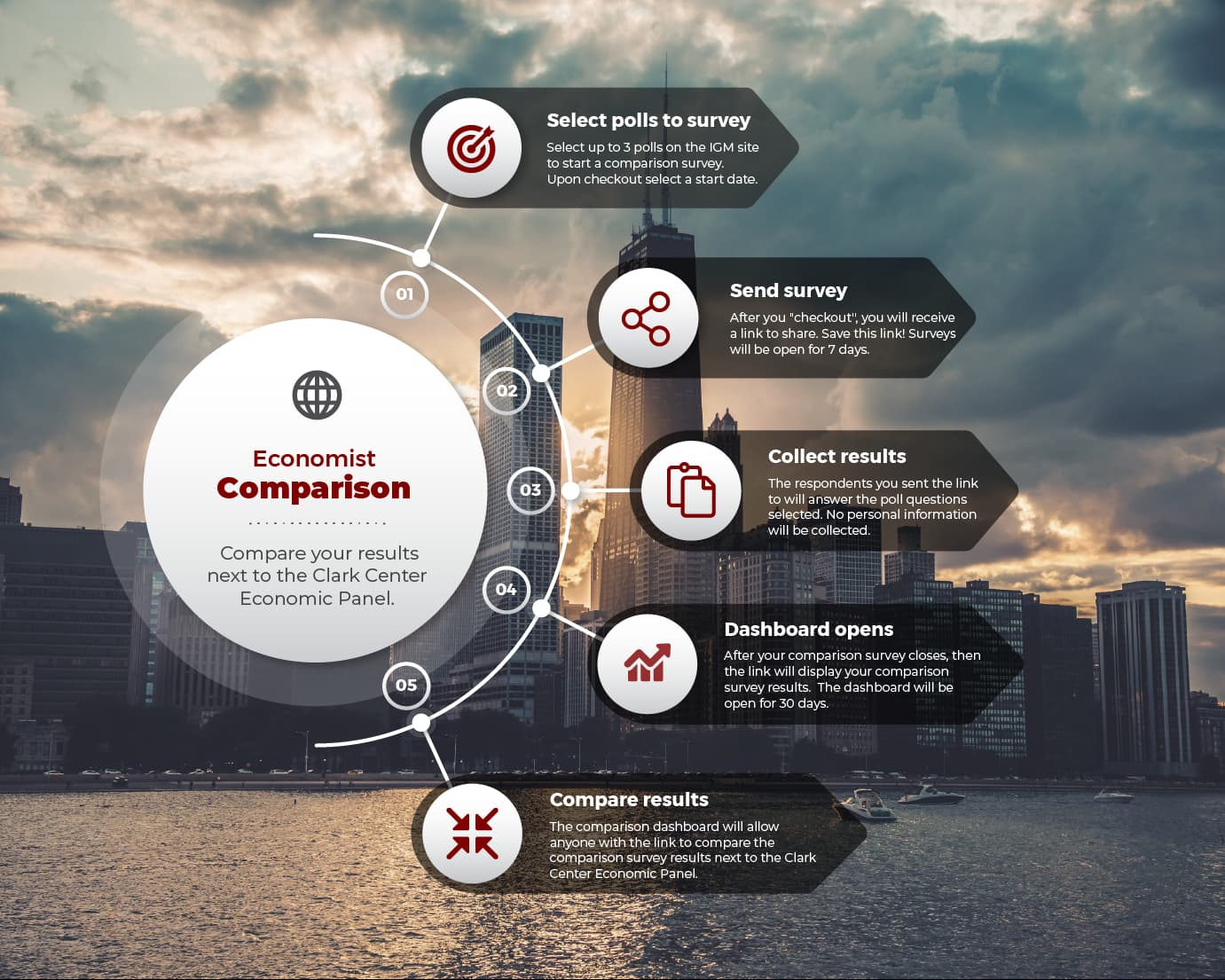Question A:
Despite the empirical failures of the Capital Asset Pricing Model (CAPM) in explaining expected stock returns, a shareholder-value maximizing publicly-traded firm should still use the CAPM to calculate the cost of equity in capital budgeting.
Responses
Responses weighted by each expert's confidence
Question B:
The equity risk premium that U.S. publicly traded firms should use in cost of equity calculations in April 2023 is above 6%.
Responses
Responses weighted by each expert's confidence
Question A Participant Responses
| Participant | University | Vote | Confidence | Bio/Vote History |
|---|---|---|---|---|
 John Campbell |
Harvard | Bio/Vote History | ||
|
While the CAPM may be a reasonable first approximation, the cost of capital is better described empirically by a multi-factor Fama-French-style model or by an intertemporal CAPM that distinguishes between cash-flow risk, discount risk, and variance risk.
-see background information here |
||||
   John Cochrane |
Hoover Institution Stanford | Bio/Vote History | ||
|
For most projects, comparable are better than CAPM. To price a burger, look at the restaurant next door or calculate cost of raising a cow. Beyond CAPM failures, we don't know betas or expected returns.
|
||||
   Francesca Cornelli |
Northwestern Kellogg | Did Not Answer | Bio/Vote History | |
|
|
||||
   Douglas Diamond |
Chicago Booth | Did Not Answer | Bio/Vote History | |
|
|
||||
   Darrell Duffie |
Stanford | Bio/Vote History | ||
|
There is empirical support for more complicated models with more factors. Introducing more complex models into practice, despite the absence of a strong theoretical basis or empirical consensus, and then adjusting over time could be beneficial, but adoption is difficult.
|
||||
   Janice Eberly |
Northwestern Kellogg | Did Not Answer | Bio/Vote History | |
|
|
||||
   Xavier Gabaix |
Harvard | Bio/Vote History | ||
|
|
||||
   Itay Goldstein |
UPenn Wharton | Bio/Vote History | ||
|
|
||||
   John Graham |
Duke Fuqua | Bio/Vote History | ||
|
|
||||
   Campbell R. Harvey |
Duke Fuqua | Bio/Vote History | ||
|
Given we don't know the true cost of capital, it is better to look at a variety of methods (and the CAPM should be one of them). It is well known that the CAPM omits certain key features like downside risk. In practice, companies use discount rates far above the CAPM (see link).
-see background information here |
||||
   David Hirshleifer |
USC | Bio/Vote History | ||
|
|
||||
   Harrison Hong |
Columbia | Bio/Vote History | ||
|
Cost of capital fluctuates over time potentially due to mispricings and firms should rationally optimize investments based on this.
|
||||
   Wei Jiang |
Emory Goizueta | Bio/Vote History | ||
|
|
||||
   Steven Kaplan |
Chicago Booth | Bio/Vote History | ||
|
Good place to start because Delaware courts will expect you to. However, in my experience, betas are sometimes unreliable / problematic.
|
||||
   Anil Kashyap |
Chicago Booth | Bio/Vote History | ||
|
It is what I teach, but mostly because even if you do something fancier it usually won't be pivotal. Getting the cash flows for capital budgeting is usually way harder than getting the discount rate and it is easy to cross check with other assumptions.
|
||||
   Ralph Koijen |
Chicago Booth | Bio/Vote History | ||
   Camelia Kuhnen |
UNC Kenan-Flagler | Bio/Vote History | ||
|
There is no other model that is the clear alternative to the CAPM that is taught to business folks.
|
||||
   Andrew Lo |
MIT Sloan | Did Not Answer | Bio/Vote History | |
|
|
||||
   Michelle Lowry |
Drexel LeBow | Bio/Vote History | ||
|
Given the failure of the CAPM, at a minimum a firm should do sensitivity using alternative models (e.g., Fama-French). This is particularly relevant for firms in size - BM categories where CAPM failures are particularly large
|
||||
   Sydney Ludvigson |
NYU | Bio/Vote History | ||
|
It could still be used as a benchmark. Despite the fact that it doesn't work well empirically, it's not obvious what model to replace it with.
|
||||
   Matteo Maggiori |
Stanford GSB | Bio/Vote History | ||
|
|
||||
   Gregor Matvos |
Northwestern Kellogg | Did Not Answer | Bio/Vote History | |
|
|
||||
   Tobias Moskowitz |
Yale School of Management | Bio/Vote History | ||
|
The CAPM fails in the short run, but looks much better over longer horizons (Moskowitz and Stambaugh (2022), Cho and Polk (2022)). So as a long term estimate of the cost of capital it should fare better, but it tends to miss short-term info which could be mispricing.
|
||||
   Stefan Nagel |
Chicago Booth | Bio/Vote History | ||
|
Despite the empirical failures in explaining average stock returns in historical data, the CAPM may still deliver the right cost of equity for long-run value maximization (Stein, 1996, "Rational capital budgeting in an irrational world", Journal of Business.)
|
||||
   Jonathan Parker |
MIT Sloan | Bio/Vote History | ||
|
The basic CAPM, which uses beta from the return on the stock market, provides a good measure of the cost of equity but must be used smartly and can be improved upon, where critical decisions include time horizon and frequency, and improvements use broader measures of returns.
|
||||
   Christine Parlour |
Berkeley Haas | Bio/Vote History | ||
|
Multi-factor models would lead to more accurate estimates. However, the correct factors to use is opaque.
|
||||
   Thomas Philippon |
NYU Stern | Bio/Vote History | ||
|
|
||||
   Manju Puri |
Duke Fuqua | Did Not Answer | Bio/Vote History | |
|
|
||||
   Michael R. Roberts |
UPenn Wharton | Bio/Vote History | ||
|
They should use the CAPM OR an alternative (e.g., implied cost of capital, multifactor) but they should use some financially grounded model.
|
||||
   Paola Sapienza |
Northwestern Kellogg | Bio/Vote History | ||
|
assuming dispersion and typical shareholder structure of the public corp. then I tend to agree in lack of better alternatives
|
||||
   Amit Seru |
Stanford GSB | Bio/Vote History | ||
|
|
||||
   Robert Stambaugh |
UPenn Wharton | Bio/Vote History | ||
|
A case for yes can be made, as the sources of the empirical failures matter.
|
||||
   Laura Starks |
UT Austin McCombs | Did Not Answer | Bio/Vote History | |
|
|
||||
   Jeremy Stein |
Harvard | Bio/Vote History | ||
|
|
||||
   Johannes Stroebel |
NYU Stern | Did Not Answer | Bio/Vote History | |
|
|
||||
   Amir Sufi |
Chicago Booth | Bio/Vote History | ||
|
|
||||
   Sheridan Titman |
UT Austin McCombs | Bio/Vote History | ||
|
Its still probably the best heuristic available.
|
||||
   Stijn Van Nieuwerburgh |
Columbia Business School | Bio/Vote History | ||
|
The company should use a risk-adjusted return that reflects its exposure to several sources of systematic risk, including market risk but also others (interest rate risk, size risk, value risk, profitability risk, etc.)
-see background information here |
||||
   Toni Whited |
UMich Ross School | Bio/Vote History | ||
|
|
||||
Question B Participant Responses
| Participant | University | Vote | Confidence | Bio/Vote History |
|---|---|---|---|---|
   John Campbell |
Harvard | Bio/Vote History | ||
|
A dynamic steady-state model (Gordon growth model) suggests the long-term expected real stock return is currently around 7%, but the 20-year TIPS yield is above 1% implying an equity premium slightly below 6%.
|
||||
   John Cochrane |
Hoover Institution Stanford | Bio/Vote History | ||
|
Most guesses of the equity premium (stocks over bonds) are lower than 6% these days, hovering more in the 3% area. The postwar period was pretty lucky, and growth has slowed. Still, stocks are so volatile that the standard error will always be high.
|
||||
   Francesca Cornelli |
Northwestern Kellogg | Did Not Answer | Bio/Vote History | |
|
|
||||
   Douglas Diamond |
Chicago Booth | Did Not Answer | Bio/Vote History | |
|
|
||||
   Darrell Duffie |
Stanford | Bio/Vote History | ||
|
Estimating this risk premium is considered difficult. Agreeing with "higher than 6%" would seem over-confident to me.
|
||||
   Janice Eberly |
Northwestern Kellogg | Did Not Answer | Bio/Vote History | |
|
|
||||
   Xavier Gabaix |
Harvard | Bio/Vote History | ||
|
|
||||
   Itay Goldstein |
UPenn Wharton | Bio/Vote History | ||
|
|
||||
   John Graham |
Duke Fuqua | Bio/Vote History | ||
|
|
||||
   Campbell R. Harvey |
Duke Fuqua | Bio/Vote History | ||
|
Most companies use a risk premium above 6% - at least from the survey evidence. This could reflect capital constraints, a preference for projects with very large upsides, etc. Just because this is how companies operate, does not mean it is how they should operate (see link).
-see background information here |
||||
   David Hirshleifer |
USC | Bio/Vote History | ||
|
|
||||
   Harrison Hong |
Columbia | Bio/Vote History | ||
|
Historically equity risk premium is about 6% over lots of macroeconomic environments.
|
||||
   Wei Jiang |
Emory Goizueta | Bio/Vote History | ||
|
|
||||
   Steven Kaplan |
Chicago Booth | Bio/Vote History | ||
|
Forward equity risk premium is always very hard to know. 6% is a good place to start.
|
||||
   Anil Kashyap |
Chicago Booth | Bio/Vote History | ||
|
How could we know if it is really 5 instead of 7, given the volatility in the data. Plus see my other comment on discount rates more generally.
|
||||
   Ralph Koijen |
Chicago Booth | Bio/Vote History | ||
|
|
||||
   Camelia Kuhnen |
UNC Kenan-Flagler | Bio/Vote History | ||
|
|
||||
   Andrew Lo |
MIT Sloan | Did Not Answer | Bio/Vote History | |
|
|
||||
   Michelle Lowry |
Drexel LeBow | Bio/Vote History | ||
|
|
||||
   Sydney Ludvigson |
NYU | Bio/Vote History | ||
|
|
||||
   Matteo Maggiori |
Stanford GSB | Bio/Vote History | ||
|
|
||||
   Gregor Matvos |
Northwestern Kellogg | Did Not Answer | Bio/Vote History | |
|
|
||||
   Tobias Moskowitz |
Yale School of Management | Bio/Vote History | ||
|
6% is high and based on ex post realizations from equity markets that did well. Moreover, theory has a tough time justifying such a premium. Plus, looking at current valuations, it’s hard to justify a large premium today going forward.
|
||||
   Stefan Nagel |
Chicago Booth | Bio/Vote History | ||
|
Stock market valuation levels are too high relative to long-term real interest rates for a 6% equity premium to be plausible.
|
||||
   Jonathan Parker |
MIT Sloan | Bio/Vote History | ||
|
The price dividend ratio which has been a good predictor of future returns suggests much lower returns going forward at the moment, as do bounds constructed from the Ian Martin bounds on expected returns.
|
||||
   Christine Parlour |
Berkeley Haas | Bio/Vote History | ||
|
Although the estimates of the equity premium have changed over time, a lower number seems appropriate.
|
||||
   Thomas Philippon |
NYU Stern | Bio/Vote History | ||
|
|
||||
   Manju Puri |
Duke Fuqua | Did Not Answer | Bio/Vote History | |
|
|
||||
   Michael R. Roberts |
UPenn Wharton | Bio/Vote History | ||
|
I am sure that the data are noisy enough to make this conclusion suspicious and that alternatives below 6% are statistically plausible.
|
||||
   Paola Sapienza |
Northwestern Kellogg | Bio/Vote History | ||
|
We should still use an average historical difference, which is still probably between 5 and 7 percent for US
|
||||
   Amit Seru |
Stanford GSB | Bio/Vote History | ||
|
|
||||
   Robert Stambaugh |
UPenn Wharton | Bio/Vote History | ||
|
Above versus below is about even. Key is to recognize the uncertainty.
|
||||
   Laura Starks |
UT Austin McCombs | Did Not Answer | Bio/Vote History | |
|
|
||||
   Jeremy Stein |
Harvard | Bio/Vote History | ||
|
|
||||
   Johannes Stroebel |
NYU Stern | Did Not Answer | Bio/Vote History | |
|
|
||||
   Amir Sufi |
Chicago Booth | Bio/Vote History | ||
|
|
||||
   Sheridan Titman |
UT Austin McCombs | Bio/Vote History | ||
|
I tend to tell the students to use about 5%. One can justify a lower rate as well. Its has declined over time as stock market participation has increased.
|
||||
   Stijn Van Nieuwerburgh |
Columbia Business School | Bio/Vote History | ||
|
The equity risk premium is very difficult to measure, even in long samples. Realized excess stock returns were high and bond yields were unusually low over the past 40 years, raising the realized excess return above the expected return going forward. 5-6% is about right.
-see background information here |
||||
   Toni Whited |
UMich Ross School | Bio/Vote History | ||
|
|
||||

